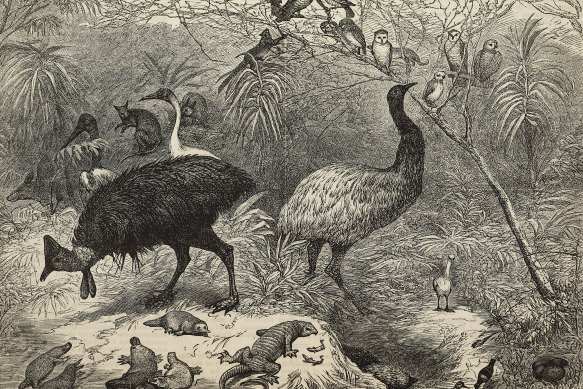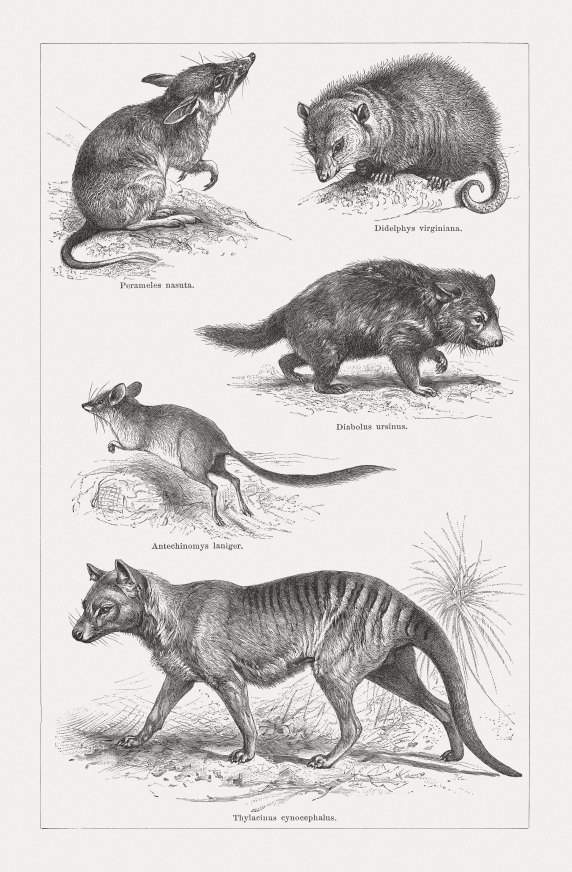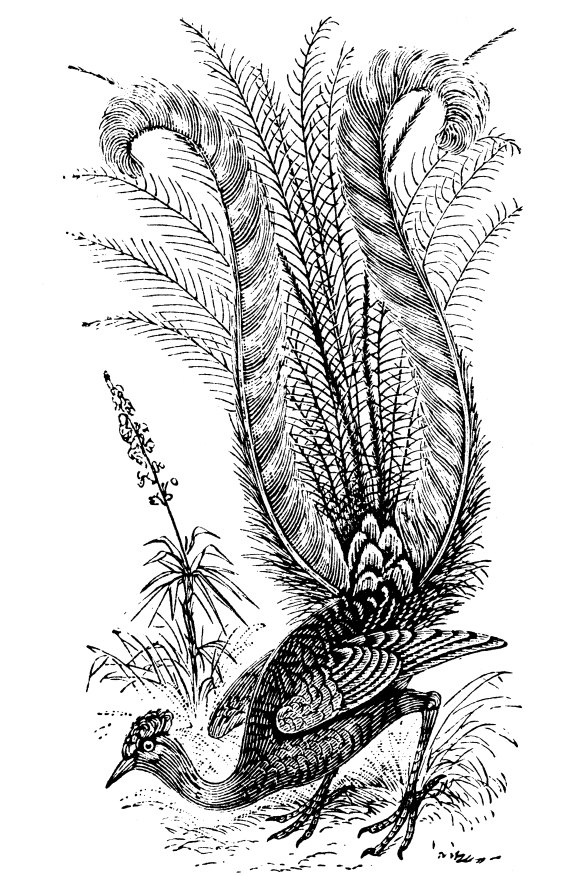Explainer
- Explainer
- Biodiversity
Why is Australia a global leader in wildlife extinctions?
Plant and animal species in Australia are becoming extinct as fast as ever. Why is it happening? And what would it take to reverse the decline?
By Mike Foley
When Captain Cook sailed into Botany Bay, the forests fringing the waters abounded with marsupials such as quolls and bandicoots, and the skies teemed with birds. The story was the same along the Yarra in what would become Melbourne and, down south, "tigers" roamed the island of Tasmania.
Since colonisation, about 100 of Australia’s unique flora and fauna species have been wiped off the planet. The rate of loss, which is as comprehensive as anywhere else on Earth, has not slowed over the past 200 years.
Why are the losses happening so fast, and why are so many experts frustrated at the failure to reverse the decline?
What has become extinct?
After its neighbour Indonesia, Australia has the second-largest number of endemic species – plants and animals found nowhere else in the world. Some other countries, such as Colombia, have a greater number of species overall but, in terms of unique wildlife, Australia is nearly at the top.
Since colonisation, Australia has lost 34 mammals, which is about the same number as the rest of the world combined over the past 200 years.
"We have just about the most responsibility for global biodiversity, more than for the US, or any other European country. And, even though we don’t have the most mammal species, we have had more mammal extinctions than any other country," says eminent ecologist Professor Hugh Possingham.
"We are losing species at a similar rate to what we were 200 years ago and it's fast, as fast as anywhere on the planet," says Possingham, a laureate fellow of the Australian Research Council, adding that populations of threatened species are declining at a rate of 1 per cent a year.
In Australia, there are 8128 accepted described species known as chordate, which include vertebrates, as well as 98,703 invertebrates, 24,716 plants, 11,846 fungi and around 4186 in other groups.
Since federal laws were introduced in 1999, the list of threatened species and ecosystems has grown by more than a third – from 1483 to 1974.
As well as some animal species, Australia's flora is under severe pressure: 37 species have been declared extinct, including the short spider orchid, Maiden's Bush-pea, the bridal flower and Daintree’s river banana. There are 1336 species of flora listed as threatened, including 191 that are critically endangered across the continent, such as the Canberra spider orchid, the ormeau bottle tree from south-east Queensland, the ballerina orchid from south-west Western Australia, the Wimmera bottle brush from western Victoria and the nightcap oak from north-east NSW.
The continent's initial wave of extinctions surged initially due to hunting, rapid urban and agricultural expansion for the burgeoning wool industry as well as the introduction of domestic cats, rabbits and foxes. Black rats ravaged island habitats.
Then governments introduced policies to speed up the process.
Why did we pay to kill millions of marsupials?
In the 1800s, NSW and Queensland devised laws first incentivising, and then actually mandating, killing of native marsupials. The laws were enacted to deal with the perceived competition for feed between livestock and kangaroos and wallabies as well as smaller mammals such as bandicoots, quolls and potoroos. The first payments for dingo scalps were offered in the 1830s. (Foxes, which were introduced in the 1870s, were also made eligible for bounties.)
Between 1877 and 1930, more than 27 million animals were killed in Queensland under the bounty system established by the Marsupial Destruction Act.
The marsupial destruction acts have never really been talked about much.
In NSW, in 1879, the Marsupial Destruction Bill was proposed to the state's parliament. It was incorporated to the Pastures and Stock Protection Act and paid bounties for 21 million kangaroos and wallabies and 3 million smaller marsupials over 20 years to 1901.
The popularity of the bounty systems made them unaffordable for state governments so they abandoned payments after several years, says University of Sydney Professor Chris Dickman. But with the requirement to cull marsupials still in place, there was a significant increase in the already popular practice of baiting with strychnine poisoning.
"The marsupial destruction acts have never really been talked about much, and it doesn’t help that there wasn’t a lot of natural history being done at the time, too,” Professor Dickman says.
Baiting programs for native animals were wound up in the 1930s.

Australian animals and birds engraved on Queensland wood for the 1886 Colonial and Indian Exhibition, London.Credit: Getty Images
What else has caused the extinctions?
Australia’s rate of extinctions is expected to continue on the same trajectory due to ongoing land clearing, habitat degradation, bushfire and continued pressure from cats, foxes and other feral animals such as deer, Dickman says.
"In Australia, people are getting more and more concerned that even previously common species are disappearing from their old ranges. The greater glider populations were declining even before the fires [last summer] and no one is quite sure why.
"Brush-tailed possums were once common right across the country, even in arid areas in Central Australia but, while they are still in good numbers in cities, they are extinct from vast areas of their natural range.
"People think the grey-headed flying fox is doing OK but their numbers have fallen dramatically. They used to be spoken about like the passenger pigeon in the US, with huge colonies flying over and blackening the dusk and sky."
Government policies have shifted over time but habitat loss from urban development and agriculture have remained mainstay threats. According to the CSIRO, habitat loss from land clearing is a primary driver of biodiversity loss in Australia.
About 8 million hectares of threatened species' habitats were cleared between 2000 and 2017 but 93 per cent of these were not assessed under the legislation, despite the powers existing to do so, a study by leading Australian ecologists found in 2019.
Koalas have become a particularly high-profile casualty. Koala habitats in NSW and Queensland have been destroyed at a faster rate since the animal was declared vulnerable in 2012 than before, a survey released in April shows.
In NSW, koala habitat destruction increased by about 32 per cent and in Queensland by about 7 per cent. Since 2001, Queensland’s koala population has halved and the NSW population has declined by between 33 per cent and 61 per cent, according to two reports by science consultants Biolink.
Why doesn’t the law stop extinctions?
While state laws had dealt with protecting threatened species, national oversight and co-ordination did not exist until 1999 when the federal government became involved, withthe Environment Protection and Biodiversity Conservation (EPBC) Act. But, 20 years down the track, according to the crossbench senator who helped the Howard government install the landmark laws, "clearly, it's not working well".
Former Democrats senator Andrew Bartlett has said the "most obvious failure is, despite the fact conditions can be attached to project approvals, there are just so many cases where conditions aren't adhered to. There are no efforts to check and no penalties."
From the start, the laws did not compel the minister to prevent destruction of threatened species habitat. In 2006, amendments were made to remove the community’s right to appeal decisions under the Act. Also, while the Environment Department was initially compelled to investigate public nominations for listing species under the threatened status, that was changed to allow ministerial discretion under a "priority list".
Under the act, there are processes to identify threatened species or ecological communities as well as things that threaten multiple species, such as the effect of rabbits on wildlife. Once wildlife is listed, recovery plans or conservation advice are prepared that describe how to reduce the threats to their survival.
The report found that 79 per cent of approvals were non-compliant or contained errors.
Australian National University ecologist Professor Sarah Legge says while there were clear legal processes for listing threatened wildlife and recovery plans to help species recover, "there is no legal requirement for anyone to fund or implement these plans or advice, nor be accountable for their progress – and that’s a big problem".
A report in June from the Commonwealth Auditor-General found the federal Environment Department is failing to protect endangered wildlife and manage conflicts of interest in development approvals, and says its work is plagued with errors. The report found that 79 per cent of approvals were non-compliant or contained errors and most decisions were not made within statutory timeframes.
The department's regulation is "not proportionate to environmental risk", project assessments are "not effective or efficient", approval conditions to manage projects' environmental damage are "not assessed with rigour, are non-compliant with procedural guidance and contain clerical or administrative errors", according to the Auditor-General.

Artist engravings from 1897, clockwise from top: long-nosed bandicoot, Virginia opossum, Tasmanian devil, Thylacine or Tasmanian tiger (now extinct), kultarr. Credit: Getty Images
Update: Laws changed to move responsibility to the states
Federal Environment Minister Sussan Ley revealed plans to change national environment laws on July 20, 2020. She said the Morrison government would cut green tape by handing responsibility for assessing the environmental impact of major projects to state governments. The move would speed up project approvals and aid economic recovery from coronavirus, she said. Federal government responsibilities under the Environment Protection and Biodiversity Conservation (EPBC) Act would be ceded to the states, which are to be accredited to commit to a new set of national standards that set common rules about development impacts on threatened species, habitat and biodiversity.
Ley revealed the plan as former Australian Competition and Consumer Commission chairman Graeme Samuel released the interim findings of his review of the Environment Protection and Biodiversity Conservation Act. National laws were “not fit to address current or future environmental challenges”, he said, while for industry they are "ineffective and inefficient". He said the devolution of powers should be balanced by a new, independent “tough cop” regulator to police the states and monitor their administration of project assessments against national standards and the EPBC Act.
Ley has ruled out creation of a new body or an independent regulator, but said the states would have to demonstrate they can meet national standards without additional Commonwealth funding. She said the federal government would monitor state governments to ensure their project assessments comply with the EPBC Act. At the time of writing, on July 27, state governments were considering the Morrison government’s proposal.
What are the next big extinction threats?
The Black Summer fires dramatically increased the scale of immediate environmental risk with nearly 10 million hectares of the eastern states torched after years of prolonged drought.
The Bureau of Meteorology told the Bushfire royal commission that global warming was the cause of a long-term warming trend, coupled with a reduction of rainfall in southern Australia in winter between April and October, which was creating drier fuel in forests, better burning conditions and overall increased fire risk.
After the fires, the Threatened Species Commission, which was set up under the 1999 laws to advise the federal Environment Minister, identified 119 animal species requiring urgent intervention to prevent extinction, including 17 birds, 20 mammals, 23 reptiles, 16 frogs, 22 crayfish, 16 species of fish and five insects or spiders. And now climate change is expected to increase the risk of extinctions.
"Climate change is a threat multiplier," says Macquarie University climate scientist and biologist Professor Lesley Hughes. "As the temperature continues to rise and we get more heatwaves, droughts and bushfires, threatened species will be in an even worse place than they are now."
Weeds choke native flora out of the landscape, and alter the ecology …
A CSIRO study quantifying extinction risk estimated that climate change would increase the rate of losses about five-fold, with 10 birds and seven mammals becoming extinct in the next 20 years "without purposeful intervention".
Alongside land clearing, invasive species of flora and fauna pose the greatest risk of further extinctions in native animals.
Introduced mammals such as deer and rabbits compete with natives for food and destroy their habitat. Invasive weeds have spread across the continent, replacing endemic species, dominating ecosystems and reducing plant diversity. There are 32 listed weeds of national significance such as bitou bush, gamba grass, fireweed and lantana.
Invasive Species Council chief executive Andrew Cox says introduced pests and weeds are "the major threat to 82 per cent of all terrestrial threatened species in Australia".
Feral and domestic cats continue to wipe out small native animals, killing more than 1.5 billion native reptiles, birds and mammals a year, according to the Threatened Species Recovery Hub. Feral cats have established self-sustaining populations across the country. They inhabit 99.8 per cent of the continent and currently pose a threat to many threatened animals including bilbies, numbats, parrots, possums and lizards.
Of Australia's 29 mammal species that have become extinct, cats have been the main contributor to 20 of them.
The Invasive Species Council's Andrew Cox says twin impacts from coronavirus and bushfires were compounding the impacts from invasive weeds on native wildlife, which could cause "years of effort to be wasted". Weeds choke native flora out of the landscape, and alter the ecology that native fauna have evolved to depend on.
"Almost all the volunteer weeding programs around the country [run by councils and community groups] have been halted," Cox says.
"Weeding is critical now, particularly in eastern Australia after the bushfires, particularly since we also got a lot of rainfall in recent weeks and the weeds are going gangbusters. Weeds thrive in disruption [from fires] and bad land management and they're getting a free hand during this period."

Artist engravings from 1897, clockwise from top: sugar glider, brushtail possum, koala, wombat, Eastern grey kangaroo. Credit: Getty Images
How much would it cost to stop extinctions?
Australians spend about $13 billion a year on pet food, pet accessories and medical treatments for their pets, according to a survey by Animal Medicines Australia in 2019.
It would cost $1.6 billion to improve the status of all of Australia’s threatened species and return their health to the point where they can be removed from lists of at-risk flora and fauna, through protections from land clearing and invasive species, habitat restoration and other means, a scientific paper published in October in Conservation Letters estimated.
But spending on Australia’s threatened species by the federal government dropped from $86.9 million in 2017-18 to $49.6 million in 2018-19. The researchers forecast it would grow to $54.6 million this financial year.
They found public investment for Australia’s 1700 threatened species, across state and federal governments, was far below comparable wealthy nations. Australia’s threatened species spending was about $122 million a year. By contrast, the US, with a similar list of 1662 threatened species, spent at least $2.1 billion a year from 2011 to 2016.
However, since the Black Summer fires, the Morrison government has announced $200 million for wildlife recovery.
Biodiversity makes us happy and it makes us a lot of money.
Professor Possingham points to the 200 species we've lost and the others we'll continue to lose. "For me, it’s an ethical question," he says. "What right do we have to do that?"
"The park at the end of my street used to have two pairs of willy wagtails 20 years ago, 10 years ago it had one pair, and now we’ve got none – 50 years ago, there were probably five pairs."
While governments face pressure from developers to speed through project approvals, Possingham points out that Australia’s wildlife losses not only impact people’s everyday enjoyment but also reduce our economic prosperity.
"The bottom line is, biodiversity makes us happy and it makes us a lot of money," he says. "People are naturally attracted to diversity. Gardens aren’t planted with row after row of the same plants.
"Before we wiped out so many of our animals, you would’ve been able to go for a walk in the bush and seen a dozen species of mammals, but now you’re lucky to see a kangaroo.
"The dawn chorus that we love is diminishing, not necessarily because species are going extinct but their overall abundance is declining.
"Even if you don’t care about nature, the business case is very strong. If your company was running Australia Inc, you would spend at least a billion dollars a year on preventing biodiversity loss because so many pay us to travel here and look at our wildlife."

Antique illustration of the Superb lyrebird, which suffered during last summer's fires. Credit: Getty Images
Get our Morning & Evening Edition newsletters
The most important news, analysis and insights delivered to your inbox at the start and end of each day. Sign up to The Sydney Morning Herald’s newsletter here and The Age’s newsletter here.
Let us explain
If you'd like some expert background on an issue or a news event, drop us a line at explainers@smh.com.au or explainers@theage.com.au. Read more explainers here.